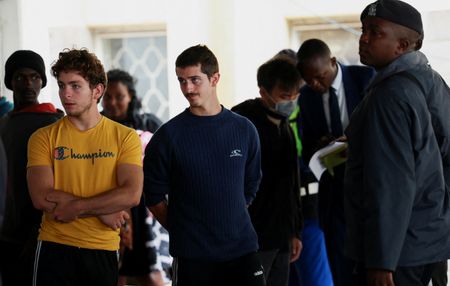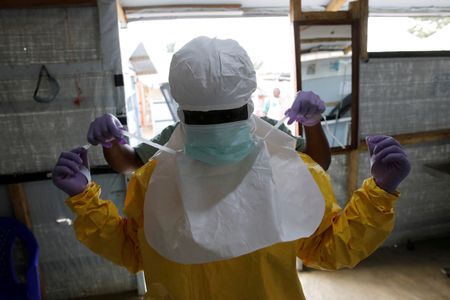By Hereward Holland and Monicah Mwangi
NAIROBI (Reuters) -Kenyan police who raided a national park guesthouse earlier this month aimed not to bust elephant tusk or rhino horn poachers but a more esoteric ring trading a much smaller, more lucrative item by weight – queen ants.
Two Belgian teenagers were arrested for wildlife trafficking at Jane Guesthouse in Naivasha on the edge of Hell’s Gate National Park. They, along with a Vietnamese man and a Kenyan national also accused of ant trafficking, pleaded guilty and will be sentenced on May 7, a magistrate said on Wednesday.
Kenyan prosecutors have valued the seizures of queens taken from giant African harvester ant colonies at about 1.2 million Kenyan shillings ($9,300).
Depending on the number and variety of each species found, however, Reuters calculated the haul would have been worth as much as $1 million if it had reached European shores.
“It’s like cocaine,” said Dino Martins, director of the Turkana Basin Institute and one of Kenya’s leading insect experts. “The price of cocaine in Colombia versus getting a kilogram in the European market is such a big value addition, that’s why people do it.”
Based on the average cost of giant African harvester ants at six retailers in Britain, each of the roughly 5,440 queens seized at Nairobi airport according to court documents is worth around £175 ($233).
Ant aficionados pay large sums to maintain ant colonies in large transparent vessels known as formicariums, which provide insights into their intricate social structures and behaviours.
But queen ants are vital for any colony as they are the only ones capable of laying eggs that grow into worker, soldier and future queen ants, meaning that trafficking can jeopardise colonies critical to Kenya’s wildlife ecosystem.
MASS DEATH IN TRANSIT
Martins said the retail value of the bug bust should be tempered by the expectation that as many as 90% of them would likely have died in transit by traffickers to Europe and Asia from disease, bacteria and freezing temperatures.
Nonetheless, the record seizures have raised questions about whether the attempted heist was a one-off by amateur enthusiasts, or a wider network of wildlife traffickers exploring new products and markets.
Ant exports are permitted from Kenya with licenses, though the regulations are difficult to navigate, Martins said.
“We are not criminals, we are 18 years old, we are naive, and I just want to go home to start my life,” one of the Belgian defendants, David Lornoy, said at the trial last week.
The Kenya Wildlife Service, however, said the case signals a landmark shift in biopiracy trends from iconic large mammals to lesser-known species that are no less ecologically critical.
“This case represents far more than insect smuggling,” said Erustus Kanga, director general of KWS.
“We’re seeing organised crime syndicates diversify from traditional ivory poaching to target our entire biodiversity – from medicinal plants, insects to micro-organisms,” he said in a statement.
Samuel Mutua, a wildlife crime expert at the International Fund for Animal Welfare, said the ant case qualifies as organised crime. “Irrespective of their age, they were able to get a lot of ants,” he said.
For Martins, the furore over the case overlooks the greater threat to insects in East Africa posed by pesticides and habitat destruction that kill millions of ants every day.
Harvester ants, whose industriousness is mentioned by King Solomon in the Bible, keep Kenya’s iconic Rift Valley healthy by spreading and mixing grass seeds across the landscape, Martins said.
“If we were to lose all the elephants in Africa, we would be devastated, but the grassland would continue. If we were to lose all the harvester ants and termites, the savannah would collapse.”
($1 = 0.7472 pounds)
(Reporting by Hereward Holland and Monicah Mwangi; Editing by Ammu Kannampilly and Mark Heinrich)













